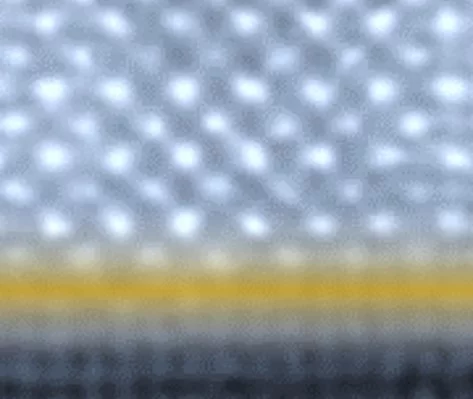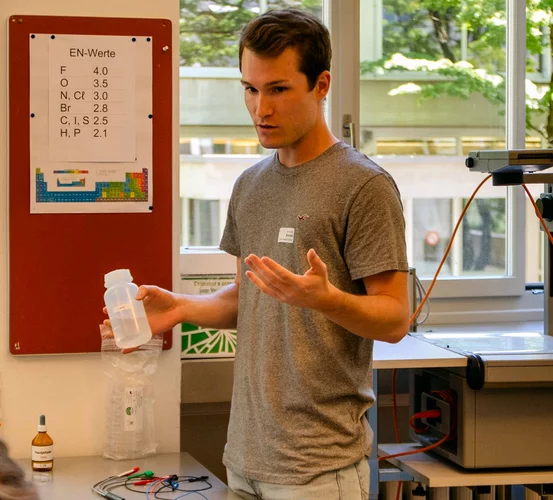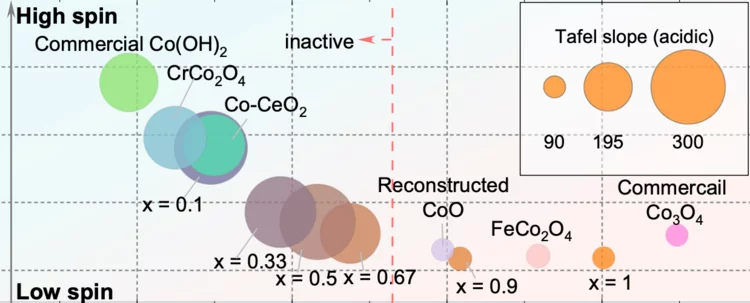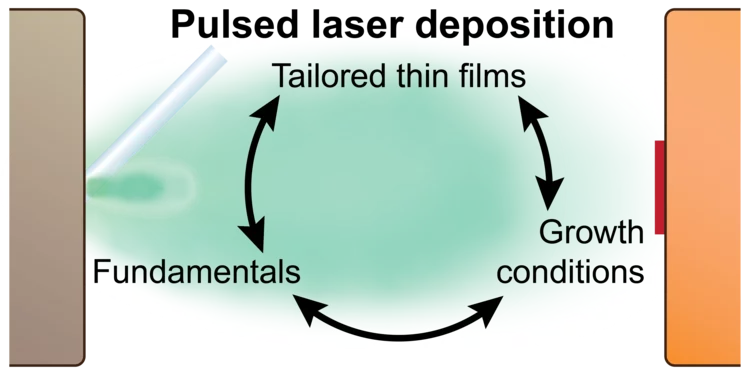Thin films are nowadays utilized in many applications, ranging from semiconductor devices to optical coatings and are even present in pharmaceuticals (polymers). This wide-spread application of films with thicknesses from atomic monolayers to microns is due to the developments of thin film deposition techniques. Thin films are also important for studies of materials with new and unique properties due to the possibility of tuning their crystallographic and morphological properties. The thin film approach, i.e. the presence of interfaces (to a substrate or the film surface) adds more degrees of freedom for influencing the properties of materials, e.g. by lattice strain or surface functionalization. For these fundamental studies of material properties large research facilities such as synchrotron radiation or neutron spallation sources are one of the keys that the Paul Scherrer Institute (PSI) provides.
News
Julius Springer Price 2024
Prof. Thomas Lippert, Editor in Chief at Applied Physics A, awards Prof. Boris Chichkov the 2024 Julius Springer Prize for Applied Physics.
Appointment of Thomas Lippert as new head of the Laboratory for Multiscale Materials Experiments (LMX)
Starting 1. December 2022, Prof. Dr. Dr. Thomas Lippert will be the new head of the Laboratory for Multiscale Materials Experiments (LMX). He follows Prof. Dr. Laura Heyderman, our first laboratory head who successfully formed and established the LMX in the PSI landscape as a Centre of Materials.
TFI goes TecDays
In July 2022, two PhDs of our Thin Films and Interfaces (TFI) Group offered a practical teaching module to pupils at the Kantonsschule Stadelhofen as part of the Swiss TecDays. These are one-day events at Swiss grammar schools, organized by the Schweizerische Akademie der Technischen Wissenschaften (SATW), to support and strengthen technology education at schools. By bringing together pupils and experts from industry, universities, or research institutions, TecDays aims to raise an early awareness for technology and science.
Upcoming Seminars
TFI Literature meeting
Date: Monday 7 April 2025, 16:00
Title: TBA
Speakers: Mohammadhossein Montazerian & Kyle Stephens
Room: OFLG/401
TFI Meeting
Date: Tuesday 15 April 2025, 16:00
Title: TBA
Speaker: Kyle Stephens
Room: OFLG/402
TFI Literature meeting
Date: Monday 22 April 2025, 16:00
Title: TBA
Speakers: Christof Schneider & Daniele Pergolesi
Room: OFLG/401
TFI Meeting
Date: Monday 28 April 2025, 16:00
Title: TBA
Speaker: Adil Baiju
Room: OFLG/402
LMX Meeting
Date: Thursday 1 May 2025, 13:00
Title: TBA
Speaker: Laura Heyderman
Room: OSGA/EG6b
Upcoming Conferences
September 2024
iWOE-30 2024
International Workshop on Oxide Electronics
September 29.-2.October 2024 , Darmstadt, Germany
More Information
August 2024
International Mass Spectrometry Conference 2024
Aug. 17-23, 2024
Melbourne, Australia
More Information will be provided here
Scientific Highlights
Anionic Disorder and Its Impact on the Surface Electronic Structure of Oxynitride Photoactive Semiconductors
The conversion of solar energy into chemical energy, stored in the form of hydrogen, bears enormous potential as a sustainable fuel for powering emerging technologies. Photoactive oxynitrides are promising materials for splitting water into molecular oxygen and hydrogen. However, one of the issues limiting widespread commercial use of oxynitrides is degradation during operation. While recent studies have shown the loss of nitrogen, its relation to reduced efficiency has not been directly and systematically addressed with experiments. In this study, we demonstrate the impact of the anionic stoichiometry of BaTaOxNy on its electronic structure and functional properties. Through experimental ion scattering, electron microscopy, and photoelectron spectroscopy investigations, we determine the anionic composition ranging from the bulk toward the surface of BaTaOxNy thin films. This further serves as input for band structure computations modeling the substitutional disorder of the anion sites. Combining our experimental and computational approaches, we reveal the depth-dependent elemental composition of oxynitride films, resulting in downward band bending and the loss of semiconducting character toward the surface. Extending beyond idealized systems, we demonstrate the relation between the electronic properties of real oxynitride photoanodes and their performance, providing guidelines for engineering highly efficient photoelectrodes and photocatalysts for clean hydrogen production.
Surface oxidation/spin state determines oxygen evolution reaction activity of cobalt-based catalysts in acidic environment
Co-based catalysts are promising candidates to replace Ir/Ru-based oxides for oxygen evolution reaction (OER) catalysis in an acidic environment. However, both the reaction mechanism and the active species under acidic conditions remain unclear. In this study, by combining surface-sensitive soft X-ray absorption spectroscopy characterization with electrochemical analysis, we discover that the acidic OER activity of Co-based catalysts are determined by their surface oxidation/spin state.
A practical guide to pulsed laser deposition
Nanoscale thin films are widely implemented across a plethora of technological and scientific areas, and form the basis for many advancements that have driven human progress, owing to the high degree of functional tunability based on the chemical composition. Pulsed laser deposition is one of the multiple physical vapour deposition routes to fabricate thin films, employing laser energy to eject material from a target in the form of a plasma ...













